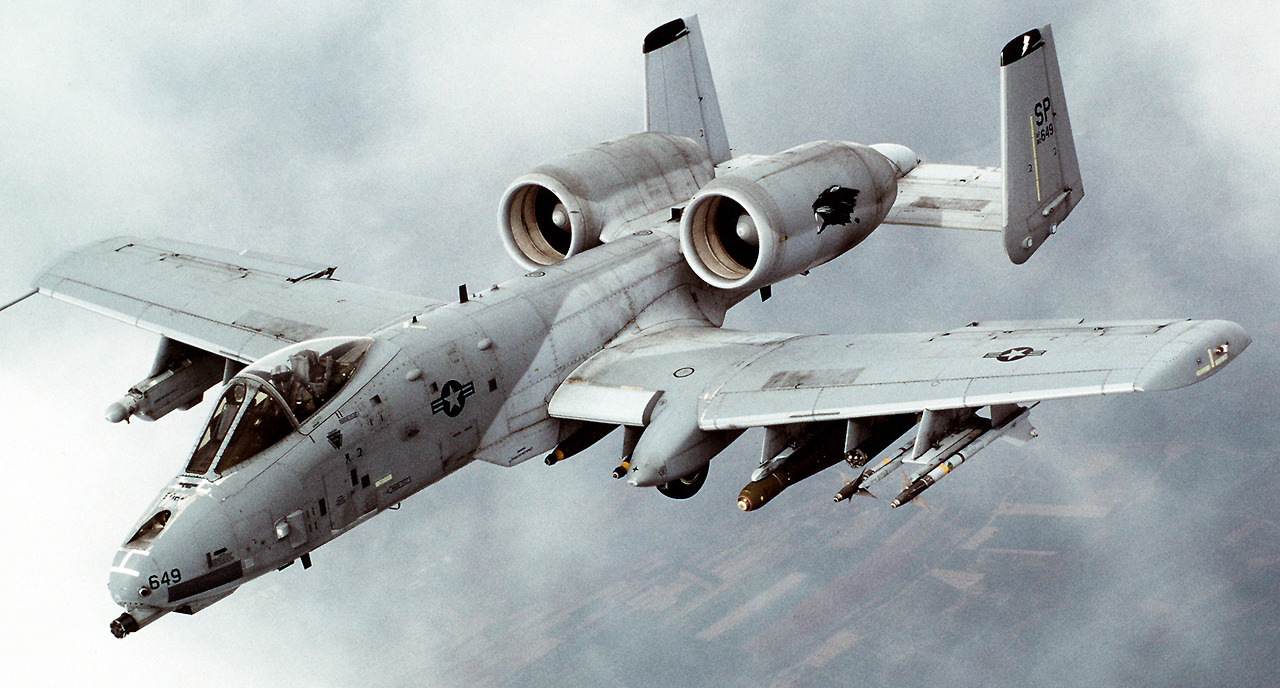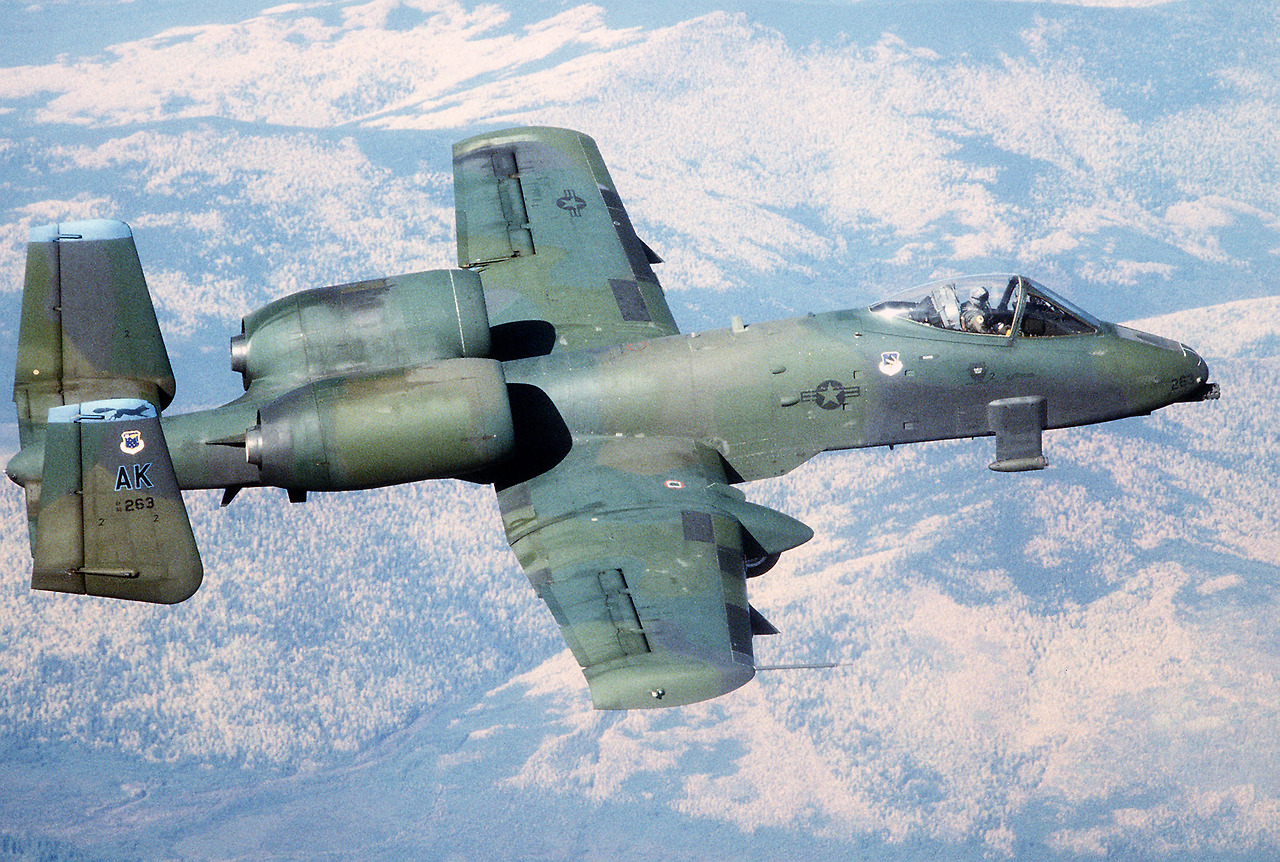The A-10 Thunderbolt II, commonly known as the “Warthog,” is a dedicated close air support (CAS) attack aircraft of the United States Air Force, designed specifically to support ground forces. It is renowned for its exceptional survivability, maneuverability at low speeds, and outstanding anti-tank capabilities. This article will explore the development background, specifications and features, operational history, and notable war episodes of the A-10 Thunderbolt II.

Development Background of the A-10 Thunderbolt II
In the late 1960s, the U.S. Air Force realized the urgent need for a dedicated close air support aircraft during the Vietnam War. The existing fighter jets at the time primarily relied on high-speed bombing runs, which were not suitable for conducting precise low-speed ground attacks. To address this issue, the U.S. Air Force launched the A-X program to develop a new attack aircraft.
Fairchild Republic proposed the design of the A-10 and was selected by the U.S. Air Force in 1972. This new attack aircraft entered service in 1976. The A-10 was named “Thunderbolt II” after the P-47 Thunderbolt, which played a crucial role in tank combat during World War II.
Specifications and Features
• Aircraft Dimensions & Weight:
• Length: 16.26 m (53.4 ft)
• Wingspan: 17.53 m (57.6 ft)
• Height: 4.47 m (14.8 ft)
• Maximum Takeoff Weight: ~22,950 kg (50,600 lbs)
• Performance:
• Maximum Speed: 706 km/h (440 mph)
• Combat Radius: ~460 km (285 miles)
• Rate of Climb: 30.5 m/s (6,000 ft/min)
• Maximum Altitude: ~13,716 m (45,000 ft)
• Engine: 2 × General Electric TF34-GE-100 turbofan engines
• Armament:
• GAU-8/A Avenger 30mm seven-barrel Gatling gun (Max Fire Rate: 3,900 rounds/min)
• AGM-65 Maverick air-to-ground missiles
• Mk-82 & Mk-84 general-purpose bombs, CBU-87/89 cluster bombs, and other various munitions
• AIM-9 Sidewinder short-range air-to-air missiles
• Defensive Equipment:
• Cockpit armor protection with titanium plates (“bathtub armor”) weighing 1,200 lbs
• Redundant fuel tanks and hydraulic systems for enhanced survivability
• Flare and chaff dispensers for countering enemy missiles
One of the most distinctive features of the A-10 is its GAU-8/A Avenger 30mm Gatling gun. This weapon is designed specifically for destroying heavily armored vehicles, and the A-10 was essentially built around this gun. Additionally, the A-10’s engines are mounted on the rear fuselage, increasing survivability against ground fire and surface-to-air missiles.

Key Development Episodes
1. The A-X Program and Competition: The development of the A-10 was initiated through the A-X program. Northrop and Fairchild Republic were the final contenders, with Fairchild Republic’s design ultimately being selected. The A-10 was designed with a focus on simplicity, ease of maintenance, and survivability.
2. Pilot Protection and Innovative Design: The A-10 introduced an innovative cockpit armor design using titanium plates to protect the pilot from enemy fire and debris. This led to the A-10 earning the nickname “Flying Tank.”
3. Adoption of the GAU-8/A Avenger Gatling Gun: The GAU-8/A Avenger is one of the most powerful aircraft-mounted automatic cannons in the world. The A-10 was designed around this weapon, emphasizing its critical role as a tank destroyer.
Operational History and War Episodes
1. Gulf War (1991):
The A-10 Thunderbolt II played a crucial role in the Gulf War, providing close air support to ground forces. It was particularly effective against Iraqi tanks and armored vehicles, destroying or damaging over 900 enemy vehicles during the conflict. The A-10 proved its exceptional durability and precision strike capability, solidifying its reputation as the “Tank Killer.”
2. Kosovo War (1999):
During the Kosovo War, the A-10 participated in NATO air operations, supporting ground forces despite the risks of flying at low altitudes. The aircraft demonstrated its high-precision targeting capabilities, successfully eliminating multiple tanks and armored vehicles.
3. Afghanistan & Iraq Wars (2001–Present):
Since the War in Afghanistan (2001) and the Iraq War (2003), the A-10 has continued to play a vital role in combat operations, focusing on precision strikes against enemy vehicles and fortifications. Despite various threats, the A-10 maintained high survivability and delivered effective close air support for ground troops.
4. Modernization Upgrades & Continued Service:
Although discussions about retiring the A-10 have surfaced, its efficiency and unmatched performance have led to multiple modernization programs. The A-10C variant, upgraded with advanced avionics and weapon systems, remains a critical asset in the U.S. Air Force’s close air support missions.
Conclusion
The A-10 Thunderbolt II is an irreplaceable close air support aircraft, earning its “Tank Killer” nickname due to its firepower and survivability. Designed with a unique emphasis on durability, the A-10 has repeatedly proven its combat effectiveness in various conflicts. Built around the powerful GAU-8/A Avenger Gatling gun, the A-10 remains a definitive example of a ground support aircraft in modern warfare, and its legacy continues to this day.

** This post is based on information searched using ChatGPT-4.0σ, so please note that there may be some differences from the actual information**
'잡다한 무기이야기' 카테고리의 다른 글
| Eurofighter Typhoon: A Multirole Fighter of Europe (0) | 2025.03.16 |
|---|---|
| 구 소련의 베스트 셀러 MIG-29 (0) | 2025.02.28 |
| SR-71 블랙버드 (SR-71 Blackbird) (1) | 2025.02.14 |
| AV-8 해리어 (AV-8 Harrier) (1) | 2025.02.10 |
| AC-130 건쉽(Gunship) (2) | 2025.02.02 |



